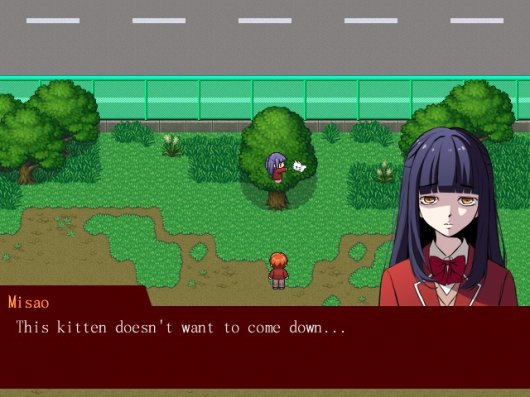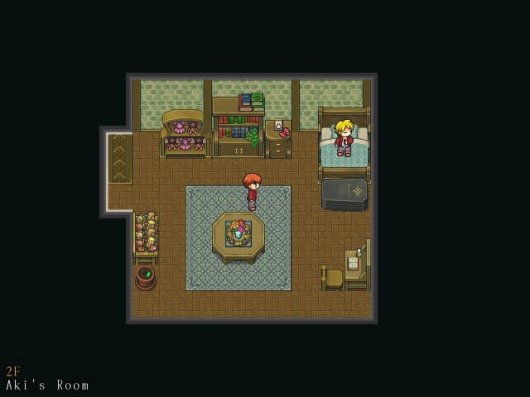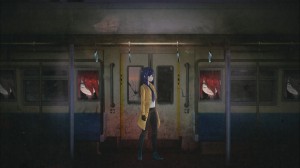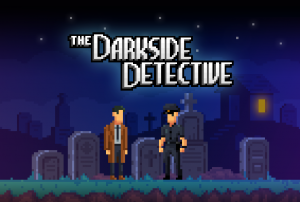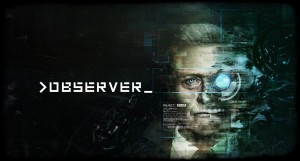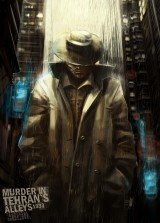Review for Misao – Definitive Edition
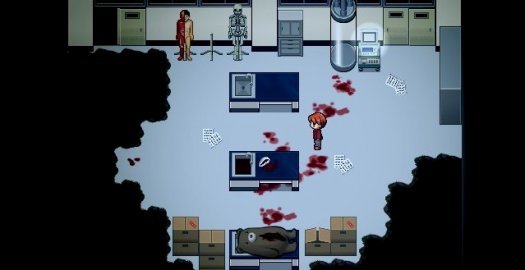
Misao – Definitive Edition is the commercial remake of a free 2014 horror-adventure game from Japanese developer Sen (also known as Miscreant’s Room), adding “improved graphics, improved puzzles” and “extra event scenes.” Though the obstacles are not too difficult, the lack of guidance and a clever but not-so-helpful hint system make for the wrong kind of challenge at times. And while the plot, centered around the missing eponymous student, features a daring emphasis on the effects of bullying and cruelty, the decision to inflict a series of gruesome deaths on players weakens the story’s potential, which is only partially redeemed by a strong finish.
Players take on the role of a high school student three months after the disappearance of Misao, a quiet, lonely girl who was often brutally picked on by her peers. Since that time, strange occurrences have been reported throughout the school, leading to the moniker “Misao’s Curse” being used to describe the origin of these events. As the game begins, you are awoken one morning to the sound of the missing girl’s pleading voice. Believing it to be just a dream, you get ready for another day at school. During lunch break, however, while you and the other students are discussing pressing matters of the day (like who has a crush on who), the sky dims, an earthquake rattles the school, and again Misao entreats you: “HELP…FIND ME…” Then, with momentary pitch darkness and a bloodcurdling scream, your classmates disappear.
A brief search leads you into the now-crumbling halls of the school, where you encounter an apparition of none other than Misao herself, who pushes you off your feet and into a hole in the floor. You come to in a small room, where you are greeted by Onigawara, a red-eyed, pointy-eared character you have never met who introduces himself as the student council president. He informs you that the curse is real, and that the school has been “sucked into another world.” In order to lift the curse and rescue your friends, you will need to save Misao’s troubled soul while avoiding the evil spirits that threaten to kill everyone in the school.
As an aside, the protagonist’s name is chosen at the beginning of the game. Additionally, players choose the gender of their character. According to the developer, this doesn’t affect the plot very much, aside from swapping the player character model, pronouns where appropriate and the nature of a few scenes, presumably those regarding the relationship between the protagonist and Misao.
Exploration plays a central part in Misao, but almost everything you can do has an element of mortal risk. Taking an example from an early part of the game, inspecting a vase of roses in the principle’s office comes with a choice of how you want to interact with it. One choice informs you that you need another item to perform the action, while the other choice leads to your death.
You will almost certainly die A LOT in Misao, and in a staggering variety of ways. Some death scenes are comical, like when a haunted book wants you to read it so badly that it presses itself against your face, smothering you to death. Others are startling, such as when you look at a bloody wall and your head is twisted off by a floating monster. A few deaths even appear to be inspired by real-world urban legends popular in Japan, such as the tale of Hanako-san, a little girl who haunts school bathrooms and can be summoned by a specific sequence of actions. In fact, the game encourages you to find as many deaths as you possibly can, to the point that a bulletin board in one of the rooms keeps track of which of the 40-plus deaths you have unlocked.
This macabre aspect was pretty funny to me, as it was likely meant to be, but I would have appreciated it better if the story and pacing didn’t seem to take such a distant backseat to it. Given how rock-solid the opening is, it was surprising to me how quickly the game loses its cinematic momentum after those tantalizing few minutes setting up the premise. That’s not to say the game doesn’t have scares. It does. Monsters attack you, characters die while you are trying to save them, and there is no shortage of disturbing moments – some mildly, and others more so – but the setup teases a strong story that quickly gets shoved aside and only shows up sporadically until the end of the game, by which time it’s all over.
One note: the gory and frightening imagery encountered throughout, including hanging bodies, large amounts of blood, decapitations, and other such scenes, would be enough to warrant a caution despite the retro RPG-style presentation that minimizes the realism. But it should also be said that those who are sensitive to depictions of bullying, sexual violence, and other forms of physical and psychological cruelty should think carefully about whether to play Misao. It’s not graphic in its depiction of sexual content, but even the implied incidents were enough to make me squirm with discomfort. Much of this takes place near the end of the game, so it’s thankfully brief, but it does deserve a mention as this is definitely a game for mature audiences only.
A few times over the course of the game you will encounter an item, location, or character that triggers a vision-like sequence that provides more context for the source of Misao’s anger toward her classmates, but these don’t happen as often as they really should to keep things interesting. And it’s a shame because the story Misao weaves is quite topical and unsettling. Ultimately, this tale is one of vicious bullying and betrayal that, by the end, manages to pull itself together in a way that both makes sense and is emotionally engaging. It’s not enough to entirely make up for leaving players largely to their own devices during the middle act, but it is redemptive in the sense that I didn’t feel that my time was wasted, just directed inefficiently.
There are two endings to Misao – Definitive Edition: one good, one bad, which are determined by a single choice made near the end. However, there is very little indication as to which of these choices will give you which ending, even taking into account what you have learned over the course of the game that could help you make that decision. As a result, the moment feels cheapened in a sense, and doubly so if, like me, you make the “wrong” decision and see the “bad” ending first, as both reveal the same significant plot point that, once you know it’s coming in the other ending, feels less significant the second time around. At least, assuming you’ve got a save near the end of the game, it is easy enough to replay from that point and see the other outcome.
Once you have unlocked the “good” ending, you gain access to “Truth,” essentially an interactive epilogue, which reveals what happened after the events in the main storyline and elaborates on the backstories of a few of the characters, though it focuses on one pivotal character’s background in particular. This part of the game is fairly short, but being almost all story allows it to deliver the kind of experience I expected from the game proper.
One effect of Misao’s bookend-style story exposition is that, despite meeting a sizable number of characters over the course of the game, none of them are particularly fleshed out. Even the epilogue features truly significant revelations about only one character. This seems like a lost opportunity, as with even just a bit more characterization, the narrative slump in the middle could have been avoided. When you consider that the full adventure comes in at around 5-6 hours, one wonders what might have been had more character emphasis been included in place of a few death scenes.
The goal in Misao is to find six “key items” and place them on an altar in a graveyard that has appeared outside the school. By doing this, Misao’s soul will be able to find rest and hopefully return the school to normal. Other objects you pick up are typically used to solve puzzles or advance in some way, such as explosives to clear rubble from a path or fluids to revive one of your injured classmates. Tasks that you encounter include figuring out how to dye an item a certain color, evading a chainsaw-wielding monster, and disabling the school’s security system. In addition to the inventory obstacles, there are a few logic puzzles, such as figuring out the meaning of a flyer you pick up in your travels through the school.
None of the puzzles would be especially hard if the game didn’t simply dump you into the game with very little idea of how to progress. Completing one objective often leaves you wondering what to do next, since there are very few cues that suggest what you should be doing. Even if you know what to do, at times there are few indications of how to accomplish what’s required.
Mitigating this somewhat is a built-in hint system in the form of a character who resides in the school’s library. She’s an odd, socially-awkward character whose desire to be your friend is so strong that it leads her to request that you give her a name, a bizarre turn of events that had me chuckling at the absurdity of it. Nonetheless, her track record for helping me out of a jam was spotty at best. While there were a few times that she nudged me in the right direction, more often the hints given were so vague that I had to resort to a walkthrough to understand what I actually needed to do. In hindsight, I usually saw what I was supposed to glean from her cryptic statements, and I welcome the attempt to give help without breaking the fourth wall, but in my experience it wasn’t especially successful here.
Dialogue is unvoiced, with subtitles displayed in a red box at the bottom of the screen. In general the script is written well, aside from a few clunky word choices, and serves its storytelling purpose. It also effectively conveys the mood and emotions of the characters (that’s one reason the eerie scenes are as unnerving as they are), though there are a few moments when the childish “voices” the characters possess undermine the drama.
The game is displayed in a 2D isometric perspective reminiscent of To the Moon, and features the same pixel art style as that game. Despite the graphical limitations, it does surprisingly well in presenting its horror elements, although the different floors of the school can be disorienting because they look so similar to each other. In certain situations, hand-drawn “jump scare” imagery appears over the main viewport to startle players more effectively. The still images that depict the various characters during dialogue are hand-drawn and very well done.
Misao uses fairly intuitive keyboard-based controls, including arrow keys for movement and other keys as needed to perform various functions, such as the space bar to interact and advance dialogue, and backspace to bring up the inventory menu. It should be noted that quicksaves, while useful for protection against the numerous deaths you will inevitably encounter, are only good for the current playing session. In order to save permanently, you must head over to Onigawara’s office on the third floor (or later, on the ground floor as well) and interact with him to record your progress among the three available save slots. While there is a “Keep Going” option that allows you to carry on after dying, this merely loads the most recent save, whether a quicksave or one of your perma-saves.
Navigating the environment is somewhat challenging until you get your bearings, because there are several floors in the school and many rooms to explore. The amount of backtracking required also seems excessive at times. This is not as annoying as it could have been, though, since the environment itself is relatively compact and the protagonist walks at a brisk pace. Moving to a door or other opening will send you into the adjacent room or hallway. Stairwells, which work much the same way as doors, allow you to transition between floors. It’s a system common to overhead 2D adventures and RPGs, so gamers familiar with this style should be able to master it quickly.
Music heard throughout is something of a mixed bag, both in terms of style and impact. Styles range from an upbeat jazz track heard briefly at the beginning to a collection of tension-filled, synth-orchestral tracks that make up the majority of the score. Two tracks in particular stand out among the small crowd: the first is one heard numerous times and consists of a slow marimba-based melody punctuated by indistinct howling sounds. For the first few minutes this is effectively creepy, but after a while it wore on my nerves. The other is a rendition of “Kagome Kagome,” sung at almost whisper-level by a little girl in one particular location. This track succeeds in being one of the most haunting tracks in the game. Unfortunately, none of the others really manage to achieve that same level of tension, though most of them do a competent enough job of it.
Sound effects are nicely done, from the protagonist’s footsteps to various other sounds like knives slicing through flesh, chainsaws buzzing, and telephones ringing, in addition to user-related effects like pinging noises when a character is surprised. None of them are especially noteworthy, but if nothing else, they are suitably utilitarian.
Perhaps the powerful opening led me to anticipate more, but for much of my time with this game, I couldn’t shake the feeling of being disappointed, though it ends up finishing even stronger than it starts. The frequent deaths are often comical in their gratuity, and there are some genuinely disturbing moments, but the narrative sags throughout much of the middle portion, and the puzzles suffer from a general lack of guidance as to what you are supposed to do to solve them, a situation not helped by the clever-but-not-great hint system. For its budget price, Misao – Definitive Edition may be worth a look for horror fans, warts and all, but go in knowing exactly what to expect. In this game so focused on killing its players, high expectations are the ultimate killjoy.





